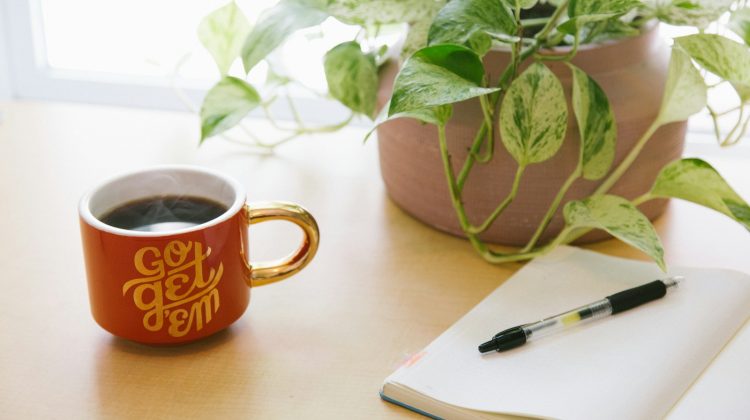
Ink & Imagination: Creative Journaling Techniques to Spark Daily Inspiration
In a world that constantly demands our attention—endless notifications, busy schedules, and relentless digital noise—finding moments of introspection and creativity can feel like an uphill battle. Yet, tucked inside an old-school habit lies a powerful antidote: journaling. But not just any journaling—creative journaling, a practice that turns blank pages into playgrounds for the mind and sanctuaries for the soul.
Unlike traditional journaling that often focuses solely on recording events or feelings, creative journaling is about expression, discovery, and inspiration. It’s where doodles meet affirmations, where collages meet daydreams, and where the act of writing becomes a form of exploration rather than obligation. It’s less about what happened and more about what could happen—what could be imagined, uncovered, or transformed.
In this essay, we’ll explore how creative journaling goes far beyond basic note-taking. We’ll dive into techniques that help spark daily inspiration, show how it can improve emotional clarity and mental wellness, and offer practical ways anyone—regardless of artistic ability—can make it a transformative daily ritual.
Why Creative Journaling Matters
Creative journaling is not just a fun pastime—it’s a powerful tool for sparking inspiration, fostering self-awareness, and re-centering your thoughts. In many ways, it functions like a mental reset. When the noise of the day gets overwhelming, putting pen (or paint, or glue) to paper can create space to breathe and reflect.
Here’s why it works:
It unlocks the subconscious. Freeform writing or sketching often leads to unexpected thoughts or ideas surfacing—things you didn’t know you were holding onto.
It ignites your imagination. Unlike structured work tasks or formal writing, creative journaling encourages unfiltered play.
It relieves pressure. There are no rules, no judgments—just a page and your creative impulse.
It builds discipline with joy. Creating a habit that feels rewarding rather than burdensome fosters consistency.
The beauty of creative journaling lies in its adaptability. Whether you’re a student, an artist, a professional, or someone who hasn’t written anything creative since school, it meets you exactly where you are.
Technique #1: Morning Pages for Mental Clarity
Popularized by Julia Cameron in The Artist’s Way, morning pages involve writing three pages of longhand, stream-of-consciousness text first thing in the morning. They’re not meant to be read or polished—they’re a brain dump.
Why it works: It clears mental clutter and uncovers patterns or feelings you didn’t realize were there. It also removes the inner critic from the creative process by encouraging flow over perfection.
How to try it: Keep your journal and pen by your bedside. When you wake up, write whatever comes to mind—fears, dreams, random thoughts, to-dos. Don’t censor. Don’t edit. Just write.
Technique #2: Visual Collaging for Storytelling
Sometimes, words aren’t enough—or aren’t the right medium for what we’re trying to express. That’s where collage journaling comes in. By cutting and pasting images, words, textures, and colors, you begin to create visual stories that capture feelings or ideas better than a paragraph ever could.
Why it works: It bypasses logical thinking and invites instinct. It also helps you process abstract emotions in a tactile, intuitive way.
How to try it: Collect magazines, old books, or printouts. Choose a theme—“hope,” “restlessness,” “adventure”—and build a spread using images, textures, and found words. You can even add small sketches or handwritten quotes to tie it all together.
Technique #3: Prompt-Based Journaling to Break the Blank Page
One of the biggest obstacles to daily journaling is the dreaded blank page. Prompts eliminate that anxiety by offering a starting point—something to react to, imagine from, or reflect on.
Why it works: Prompts stimulate creativity without forcing direction. They offer structure without rigidity, helping ideas flow more naturally.
How to try it: Dedicate one section of your journal to daily or weekly prompts. Some examples:
“If fear weren’t real, what would I do today?”
“Describe a room from your childhood using all five senses.”
“Invent a holiday that the world desperately needs right now.”
Respond however you want—with words, drawings, diagrams, or even poetry.
Technique #4: The “One Line a Day” Method for Everyday Insight
Not every journal entry needs to be an essay. The “one line a day” technique is perfect for people short on time or new to journaling. The idea is to write a single line—something meaningful, interesting, or beautiful—every day.
Why it works: It cultivates the habit of daily observation. It forces you to extract a moment, emotion, or thought from the day and reflect on it with intention.
How to try it: Choose a specific journal or section, and label each day with a date. Write just one sentence. Over time, these single lines form a mosaic of your evolving inner world.
Technique #5: Creative Lists to Organize Inspiration
Lists may sound mundane, but in a creative journal, they can become imaginative vaults. A list doesn’t have to be grocery-oriented—it can be poetic, insightful, or wild.
Why it works: Lists trick the brain into getting started quickly. They’re linear but flexible. Plus, they reveal recurring thoughts and desires you may not realize are themes in your life.
How to try it: Try lists like:
Books I want to write (even if I never do)
Colors that describe my mood today
Things I’ve learned from failure
Alternate endings for my favorite movie
You’ll find that what begins as a list often evolves into full thoughts, memories, or dreams that beg for elaboration.
Technique #6: Quote Reflections for External Spark
Quotes are like matches—they can ignite ideas quickly. Reflecting on someone else’s words often helps us understand our own.
Why it works: It gives you an anchor to explore a concept from different angles. It can also act as a form of conversation between you and the thinker/writer/artist behind the quote.
How to try it: Start a quote page in your journal. Each day or week, choose a quote that speaks to you and write it at the top of the page. Then, write your reaction. What do you agree with? Disagree with? How does it apply to your current life?
How to Build the Habit (Without Making It a Chore)
Many people start journaling with excitement, only to fall off after a few days. The key to sustainability is low-pressure consistency and playfulness.
Here’s how to make it stick:
Set a mood, not a schedule: Light a candle, play soft music, make tea—create a ritual around your journaling that feels comforting.
Keep your journal visible: Out of sight, out of mind. Keep it near your bed, on your desk, or in your bag.
Ditch perfection: There are no grades here. Let it be messy. Let it be half-finished. Let it be yours.
Mix formats: Don’t feel confined to one method. Sketch one day, write the next, collage the third. Let the journal evolve with you.
Final Thoughts: The Power of Pen and Possibility
Creative journaling is more than a hobby; it’s a daily invitation to connect with your deeper self. It’s a permission slip to pause, to wonder, to make meaning in a world that often feels rushed and transactional. You don’t have to be a writer, a poet, or an artist to keep a creative journal—you only have to be curious.










